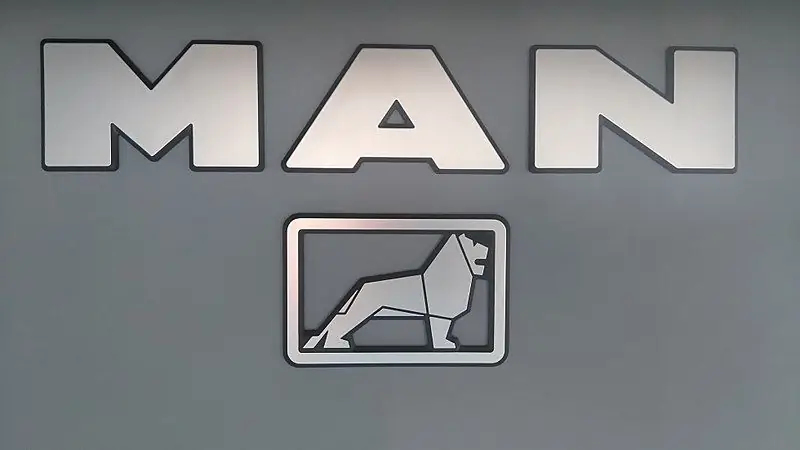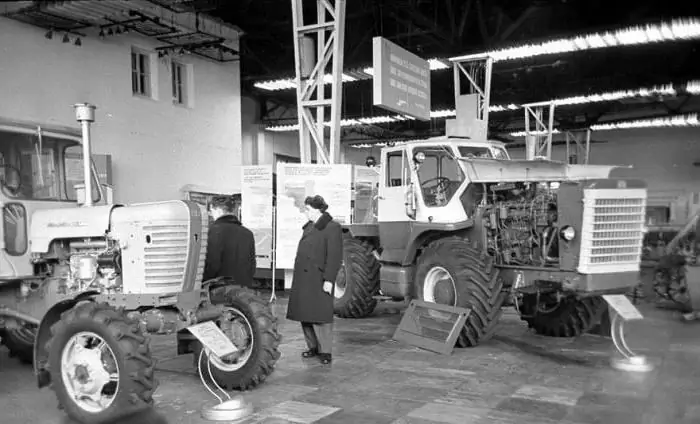2026 Author: Erin Ralphs | [email protected]. Last modified: 2025-01-22 21:14:13
In 1965, the tractor plant in Kharkov mastered small-scale production of a new three-ton class wheeled vehicle, the development of which began back in 1959. The first batches of machines for testing under various conditions appeared at the beginning of 1962. The initiator of the creation of such tractors was N. S. Khrushchev, who saw such equipment during his visit to the United States. The new machine was created under the leadership of the chief designer of the KhTZ plant A. A. Soshnikov and received the designation T-125. One of the main features of this technique was the combination of the characteristics of a high-speed tractor with increased cross-country ability and a tractor.
General information
The main area of use of the new tractor was agricultural, road and transportation work. When used in the field, the T-125 tractor, due to the presence of all-wheel drive, could perform a wide range of work in various soil conditions. Large diameter wheels provided a ground clearance of about 400 mm, which was reduced by 50 mm when installing the linkage mechanism. The photo below shows the T-125 and MTZ-52 tractors at one of the exhibitions.

During transportation, the tractor worked with semi-trailers with a carrying capacity of up to 20 thousand kg. At the same time, such vehicles were allowed to operate on public roads and on country roads, as well as in off-road conditions. The maximum speed of the T-125 tractor coupled with a trailer reached 30 km/h.
Engine and transmission
A six-cylinder 130-horsepower diesel engine model AM-03 with a two-disk dry clutch was used as a power unit. For many nodes, the motor was unified with the widespread YaMZ-236 diesel engines. The gearbox of the T-125 tractor is a classic for machines with all-wheel drive.
The main gearbox has four main gears and an additional low range, used when working in heavy off-road conditions or when accelerating from a standstill with a heavy load. A two-stage transfer case was docked with the gearbox. A serial copy of the machine is shown in the photo below, the stamped inscription "T-125" on the side of the hood is clearly visible.

Thanks to this transmission, the tractor could have a forward speed in the range from 0.7 to 29 km/h. At the same time, at the first two speeds (without a downshift), a pulling force of 3500 kg was achieved.
Chassis and cab
The tractor was equipped with two drive axles, and the rear one was rigidly joined to the frame. The front axle had a spring suspension and a drive connected from the driver's seat. The frame itself consisted of two parts,interconnected by a hinge. The design of axles and wheels made it possible to adjust the gauge to two fixed values - 1630 and 1910 mm. To drive auxiliary and attachment devices on the rear of the tractor there was a power take-off shaft. For him, there were two sets of interchangeable gears, which provided a rotational speed of 540 or 1000 revolutions. Below is a photo of the KhTZ T-125 tractor at one of the exhibitions of agricultural machinery.

The all-metal driver's cab had two separate seats and was equipped with an efficient heating and ventilation system. Additional ventilation in hot weather could be carried out through a folding windshield. The large glass area of the doors and the rear of the cab provided a good overview for the driver of the T-125 tractor. A hydraulic booster was included in the steering scheme, which greatly facilitated the control of the machine. Air brakes were used to stop a tractor weighing almost 7,000 kg.
A number of modifications were created on the basis of the tractor, such as the T-127 version for timber industry enterprises, the T-128 road machine, the KT-125 engineering tractor and the T-126 front-loader. The layout of the logging machine is shown below.

The family of machines was produced for a short time, until 1969, and during this time only 195 tractors of the basic version and 62 more machines of various modifications were assembled. Not a single car has survived to our time. Even photographs of the T-125 andmachines based on it.
Recommended:
"MAN": country of origin and main characteristics

"MAN": country of origin, history of creation, interesting facts, features, photos. Car "MAN": technical characteristics of the main modifications, pluses and minuses, operational capabilities. Where are MAN trucks manufactured?
Main truck tractor KAMAZ-5490 "Neo": reviews, cab description, specifications, overall dimensions

Main truck tractor KAMAZ-5490 "Neo": reviews, specifications, innovations, operation, photo, overall dimensions, cab. Truck tractor KamAZ-5490 "Neo": parameters, history of creation, test drive, features
Tractor DT-54 - the main Soviet plowman with good technical data

The Soviet caterpillar tractor DT-54 (photos are presented on the page) was created in 1949 at a plant in Kharkov. The serial production of a new agricultural machine was launched there. The DT-54 tractor was produced at KhTZ from 1949 to 1961. Also, production was opened at the Stalingrad Tractor Plant, where the machine was produced in approximately the same quantity
Technical characteristics of YaMZ 236, the device of the main components

The YaMZ 236 diesel engine has replaced the outdated family of YaMZ 204/206 two-stroke engines. The fundamental difference between the new engines was a four-stroke cycle of operation, which significantly increased the performance of the engines. The design of the motor made it possible to subsequently install a pressurization system on it
KAMAZ-6522: features and main characteristics

KamAZ-6522 is a domestic dump truck with quite impressive power and a high level of efficiency. This model compares favorably with the durability of the main components and assemblies, and is also very reliable and unpretentious in maintenance

